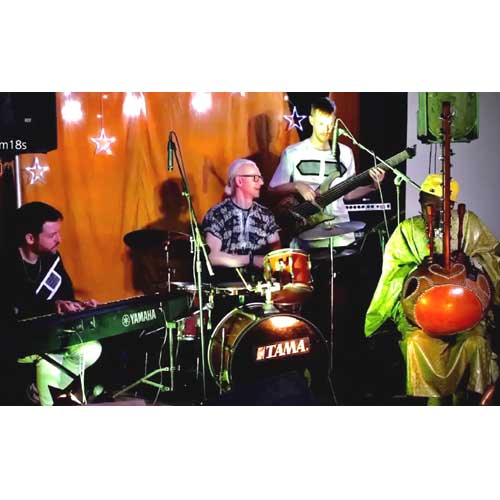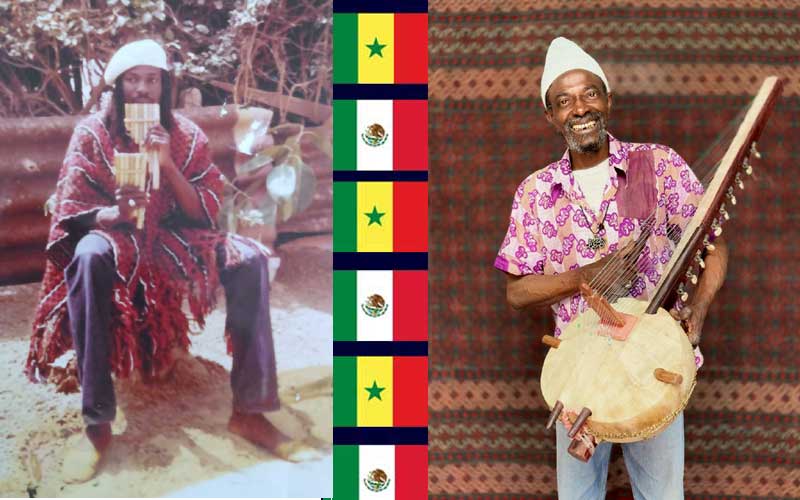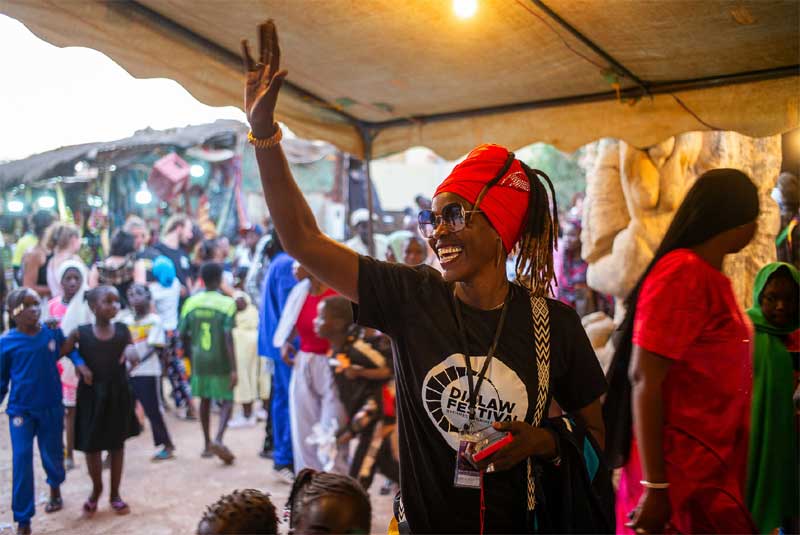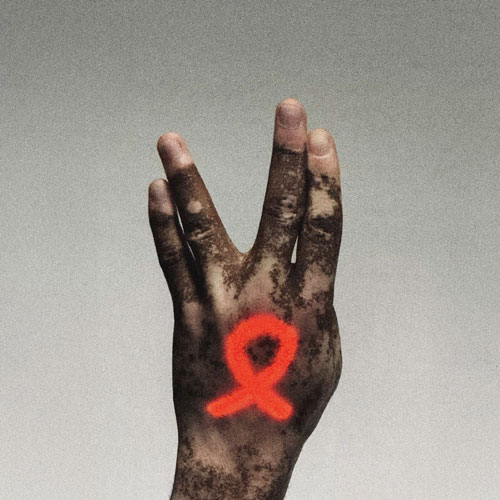Compagnies coloniales et 78 tours
Dans les années 1930, les labels Columbia et la Voix de son maître envoient, en vue de l’exposition coloniale, leurs premières missions. Les enregistrements initiaux font entendre les Piroguiers de la Betsiboka, la chanteuse Miss Vanille et surtout le mpihira gasy (chanteur d’hiragasy) Teraka l’Fenoraivo. Le 78 tours fait alors son apparition diffusé par Raoul de Comarmont qui crée en 1931, sa société puis décide en 1939 de devenir producteur.
«~Les compagnies coloniales tenaient les 3/4 de la production. Mon père a acheté une machine à graver à l’ile Maurice. Au cause de la guerre, elle n’est jamais arrivée à Tana~», explique Jean-François de Comarmont. Après la guerre, les enregistrements se font sur un fil magnétique qui défilent dans une cartouche. Raoul de Comarmont fait ses premiers enregistrements en 1947. «~La seule machine que possèdait notre famille a brûlé dans un incendie~» se souvient Jean-François. L’opérette malgache devient très populaire.
Droits d’auteurs et «~joint ventures~»
L’apparition en 1952 de la bande magnétique signe la naissance des magnétophones. «~S’est alors posé le problème des droits d’auteurs. En 1952, les missions offraient juste un forfait tandis que nous payions les artistes au pourcentage. La SCAM qui fait son apparition fixe alors à 12,5% du prix de vente les royalties, soit deux fois plus que les compagnies coloniales~», poursuit Jean-François. Ce dernier prend enfin sa part de marché. En 1960, il crée son label Discomad. En 1961, le 45 tours remplace le 78 tours tandis que les foyers de l’ile se dotent de tourne-disques. En 1968, la grande ile se rapproche de l’Afrique du Sud. Pathé Marconi s’associe à EMI Afrique du Sud et Discomad collabore avec le label Teal. Certains artistes comme Kelly Rajarison partent enregistrer pour EMI à Nairobi.
Scène rouge et verte
En 1975, le marxiste Didier Ratsiraka accède au pouvoir. «~Quand le pays a rompu ses relations avec l’Afrique du sud, nous nous sommes rabattus sur le twist et le yéyé. Nous produisions alors 1million 200 000 45 tours par an~», explique De Comarmont qui crée en association avec le frère du chef de l’Etat, Etienne Ratsiraka, un second label Kayamba et produit les musiques côtières. Connus sous le nom de Tapany Maintso (à moitié verte) en référence à la couleur du label, les 45 tours de salegy et de watcha watcha font un malheur.
Piratage et internationalisation
Dans les années 1980, l’arrivée de la cassette et avec elle du piratage fait plonger l’industrie musicale et poussent les artistes à s’exiler. En 1989, le son digital apparait à Madagascar avec le studio Mars ouvert par Stéphane de Comarmont, fils de Jean-François. Mais le marché national trop étroit (CDs trop chers, lecteurs trop peu nombreux) et la popularité grandissante des musiques africaines en Europe conforte le départ des musiciens à la recherche de producteurs étrangers. Quelques petits labels occidentaux, l’américain Shanachie, les anglais Rogue, Globestyle et Realworld, les français Celluloid et Label Bleu, les allemands Feuer & Eis et Wergo et le japonais Anima Music se lancent dans la production d’artistes malgaches. Ils seront suivis quelques années plus tard par les Majors.
Le retour des enfants prodigues
Aujourd’hui, les artistes ont obtenu une reconnaissance internationale et font des tournées dans le monde entier. Soucieux de répercuter le phénomène sur l’ile, certains ont mis en place des structures de productions sur le marché local. Benny (du groupe Fenoamby) a créé sa structure de production et Rossy a ouvert un studio d’enregistrement accueillant artistes nationaux et étrangers. Petite note d’espoir pour une scène encore trop isolée du reste de l’Afrique. 78 rpm
Prompted by the forthcoming Exposition Coloniale in Paris, French record Companies Columbia and La Voix de son Maître sent their first expeditions to the island during this period. The first recordings they issued were of Les Piroguiers de la Betsiboka, singer Miss Vanille and especially the hiragasy singer Teraka l’Fenoraivo. The first 78 rpm records to appear were distributed by Raoul de Comarmont through the company he set up in 1931. In 1939, he decided to become a producer. “Colonial companies controlled three-quarters of the local production. My father bought a pressing machine in Mauritius, but because of the war it never reached Tana”, explains Jean-François de Comarmont. Set backs like these did not stop Madagascan music from developping, however. The style in vogue was operetta or kalon’ny fahiny
Royalties
After the war, recordings were made on a magnetic wire running inside a cartridge. This was the golden age of operetta. Raoul de Comarmont made his first recordings in 1947. “The only machine our family possessed was lost in a fire”, Jean-François remermers. Magnetic tape was developped in 1952, harlading the arrival of the tape recorder. “Then, the problem of royalties arose” », Jean François continues. “In 1952, foreign companies were paying artists a simple flat rate, whereas we were paying artists a percentage on sales. The newly-formed SCAM responsible for collecting and distributing music royalties set a rate of 12,5% of the sale price, which was twice the percentage offered by the colonial companies”. De Comarmont finally took his own share of the market, setting up his own discomad label in 1960.
Seven inch singles
In 1961 the seven-inch single replaced the 78, and modern record players began appearing in households throughout the island. Salegy broke new ground by using electric instruments with the chromatic accordion and by mixing local styles with imported rhythms. “The country was invaded by African beat in 1968, when Pathé Marconi formed an association with EMI South Africa. My own company, Discomad worked with Teal”, de Comarmont explains. Madagascan began listening to Franco’s congolese rumba. Then Lulu Masilela and Massian, two saxophonists from the South African townships, settled in Tana, gave a Madagascan slant to their names and turned the capital on to township jive. Another new style was watcha watcha, Kenyan benga introduced by Kelly Rajarison and other artists who had been recorded for EMI in Nairobi.
Kayamba
In 1975, Marxist leader Didier Ratsiraka came to power. “when the country broke off relations with South Africa, we fell back on twist and Europop music. At this time we were producing 1.200 000 singles a year”, says De Comarmont, who then formed a second company, in partnership with the president’s brother Etienne Ratsiraka. His new Kayamba label was devoted to coastal music. Their vibrant salegy and watcha watcha singles – known from the colour of their labels as tapany maintso (half green) – sold as fast as they could be pressed.
Western Companies
In the 1980s, with widespread piracy and a deteriorating economy, the country’s music market declined and many musicians moved to the West. Digital recording facilities appeared iin Madagascar in 1989, when Stephane de Comarmont (son of Jean-François) opened his Mars studio. But CD players and CDs remain an expensive commodity and the local market is too narrow to support the country’s musicians, who have sought wider distribution through Western record companies. Shanachie (USA), Globestyle, Rogue and Realworld (UK), Celluloïd and Label Bleu (France), Feuer & Eis and Wergo (Germany) and Anima Music (Japan) have launched a whole range of Madagascan talent.








Laissez un commentaire
Vous devez être logged in pour poster un commentaire.